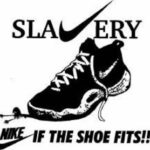The job order costing system seeks to estimate costs of production for different jobs included in specific customer orders. Within organizations treating each job as a single output unit, or when multiple products are produced within a given period, this type of costing system is most relevant (Garrison, Noreen, & Brewer, 2008 and Atkinson, Kaplan, & Young, 2005). Materials, labor hours and machine hours will fluctuate from one product and one customer order to the next, and may differ further in the demand that is inherently placed on manufacturing overhead. Customized production is one example of a specific customer or job order that might require greater support resources than general production activity. If a manufacturing organization were to produce a computer chip designed and patented by another organization, it may require some process re-engineering, use of materials not used in general production, or additional elements of change such as a different product logo, etc. In such a case, management would want to be certain that the specific order reflects all relative costs, otherwise product cost information will not be accurate. In the instance that the company is manufacturing multiple types of computer chips within a given period, employment of the job order costing system would also be appropriate as management would want to fully recognize the actual costs incurred by each product.
Keeping accurate production cost records in an organization producing multiple products becomes more complex when compared to an organization that produces a single product. The different products manufactured will ultimately incur different costs and consume company resources to varying degrees, requiring separate product cost and/or job cost records to appropriately manage for efficient operations (Garrison, et al.). Using job cost sheets to track the flow of costs incurred for each job, or customer order, the job order costing system uses a concept similar to an inventory concept to maintain detailed records of all job order associated costs beginning with raw inventory materials, to work in process inventory, through finished goods. Once the goods are finalized and sold to the customer, the expenses are recorded as cost of goods sold. This job specific information is especially helpful to management when it comes to bidding on or providing a quote to provide a product at a particular volume, or how customized production will impact costs for both the organization and the customer (Atkinson, et al.).
With the introduction of the new computer memory chip, a bill of materials will be required to indicate all essential direct materials needed to complete a single unit. The bill of materials provides a starting point by which to provide cost and pricing information relative to the specific order. As prospective costs are realized, a production order is released and a materials requisition form provides specific quantities and types of direct materials needed and further provides information communicating which job the different materials will be charged to. The purpose of the materials requisition form is not only to control the flow of materials to production, but to ensure that these direct materials are recorded and charged on the correct job order cost sheet. Direct labor is handled in a similar manner, labor charges that are easily allocated to a specific order are recorded on the job sheet and charged to the appropriate order. Those labor charges that are not as easily contributable to a specific job become part of manufacturing overhead. Each worker’s records segregate total hours by specific job order and specific task ensuring correct costing information by job and providing essential financial data for future planning and estimating (Garrison, et al.).
Overhead charges are slightly more complex in allocation, as those charges are not generally direct. Further complicating deduction of accurate overhead cost allocation is the fact that overhead costs remain relatively constant and consist of numerous individual activities such as supplies and labor needed for maintaining factory equipment or supervisory compensation. Allocation of overhead costs requires determination of an allocation base, or cost driver. The cost driver is a quantitative, job-related item that drives the overhead cost. The cost driver is the main variable element in production that influences costs (Horngren, Datar, & Foster, 2006). In instances where the support for direct labor assumes the majority of overhead costs, direct labor hours would commonly be used as a driver. However, in an instance where product design, engineering, machine hours or materials assumed the majority of overhead costs associated with a specific job or customer order, then those items would respectively be viewed as cost drivers. A predetermined overhead rate is commonly applied to determine the appropriate overhead cost for a given period. The predetermined overhead rate represents the total manufacturing overhead costs divided by the estimated cost of the allocation base, or cost driver. This provides only an estimate, for the period, and is aggregated further to become relevant to each job order by dividing that predetermined overhead rate by the actual amount of allocation base incurred within the specific orders (Garrison, et al. and Winicur, 1993). Once the job sheet is complete, all direct materials, labor and manufacturing overhead are transferred appropriately, a per product cost can be calculated by dividing the total job cost as reflected on the job sheet, by the number of items produced (Garrison, et al.).
When a single product is produced in large quantities for an extended period of time, process costing is a more relevant choice as a product costing system. Just like the job order costing system, the process costing system serves to provide a per unit, or per product cost based on direct costs as well as manufacturing overhead. Many of the products that are mass produced are sold on an individual basis and in large quantities of production, a minute change in per unit cost represents a significant total cost change, making correct cost per unit allocation imperative to pricing, planning, and controlling costs (White, 2006). Process costing is similar to job order costing in that the cost per unit is derived by dividing total manufacturing costs by the total units produced, only process costing does this for one product over a given period of production whereas job costing does this over the life of a specific job order. The same basic manufacturing expenses are used in both systems, direct labor, direct materials, and manufacturing overhead, and include the same inventory accounts, raw material, work in process, and finished goods. Although identical cost information is used, process costing has no use for specifying individual orders and provides unit costs by department (Garrison, et al.).
The manufacturing process associated with the single product in production for the given period is broken into different departments. The number of processes required to manufacture a specific product is irrelevant, as the activity in each process is identically applied to all units. Costs incurred throughout production are traced back to the different process departments as opposed to numerous job orders, making cost tracking less complex than what occurs in the job order costing system. Each department has a respective work in process account and finished products leaving one department will transfer to work in process in the following department within the entire manufacturing process. The direct and indirect costs can be added in at any processing department to provide cumulative cost information and to measure progress (Garrison, et al.).
A materials requisition form is also used in process costing to acquire materials for production and maintain a record of direct materials costs and direct labor hours are traced to specific production departments. Predetermined overhead rates, just as those used in job costing, are generally applied in processing costing within in each department as the product moves through the manufacturing process. As product is completed, it moves through all production departments and ultimately ends up in finished goods as accumulated expenses are charged to cost of goods sold (Garrison, et al.).
Per unit costs cannot be deducted from each department’s accumulated production costs without determining product output per department. The different departments typically have units that have not yet been completely processed, and accurate per unit cost information will need to effectively count for all units. The figure that is used to account for the product of partially completed units and their respective percentage of completion is called equivalent units. The equivalent units figure communicates the number of units that could have been completed from the materials and partially assembled units remaining at a given time of cost calculation or allocation. The equivalent unit figure can be derived in a number of ways: by multiplying the number of partially completed product units by their percentage of completion or by using the weighted average method. Once costs per equivalent unit are calculated, these costs make up the value of units in ending inventory and units in transfer between different production departments. Equivalent units are multiplied by the cost per equivalent unit, then allocated in each inventory cost category (Garrison, et al.).
As with all managerial accounting process considerations, the goal is to add value to the organization and its processes, and choice of product costing system must conform with the added value principle. The impact of support and resources required by each choice in costing system will play a role in the decision making process.
Atkinson, A.A., Kaplan, R.S., and Young, S.M. (2005). Management accounting: a custom edition. Pearson Custom Publishing. Pearson Prentice Hall. Boston, MA.
Garrison, R.H., Noreen, E.W., and Brewer, P.C. (2008). Managerial accounting, 12e. McGraw-Hill Irwin. Boston, MA.
Horngren, C.T., Datar, S.M. and Foster, G. (2006). Cost accounting: a managerial emphasis, 12e. Pearson Prentice Hall. Upper Saddle River, NJ.
White, M. (2006). Chapter 18: process costing. Middle City Online Accounting Tutorial. Fulton, MO. Retrieved on June 8, 2008 from Web site http://www.middlecity.com/ch18.shtml
Winicur, B. (May, 1993). Job order costing. The National Public Accountant. May, 1993.
Retrieved on June 8, 2008 from Web site
http://findarticles.com/p/articles/mi_m4325/is_n5_v38/ai_n25021988


